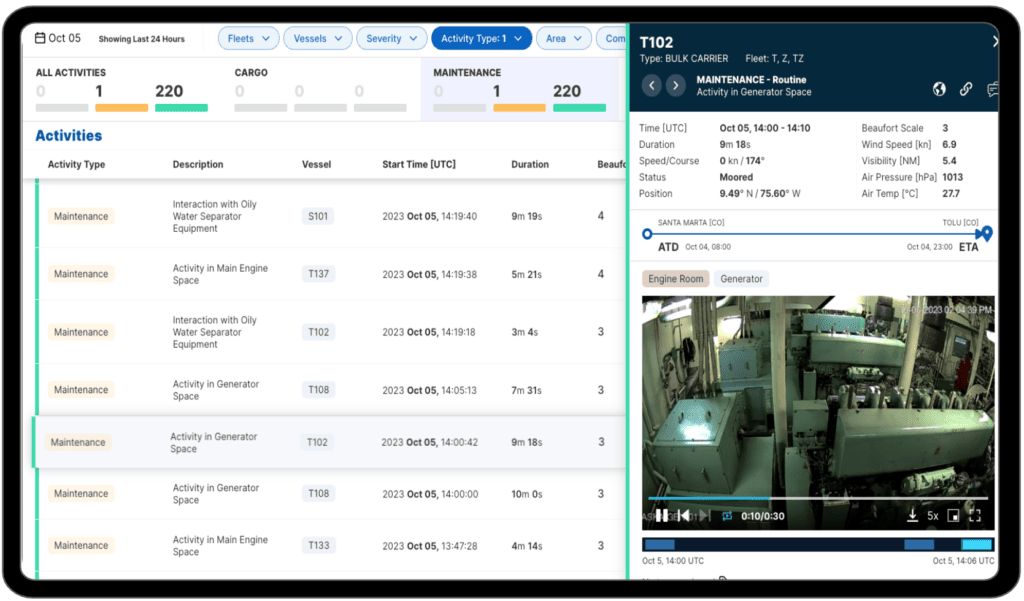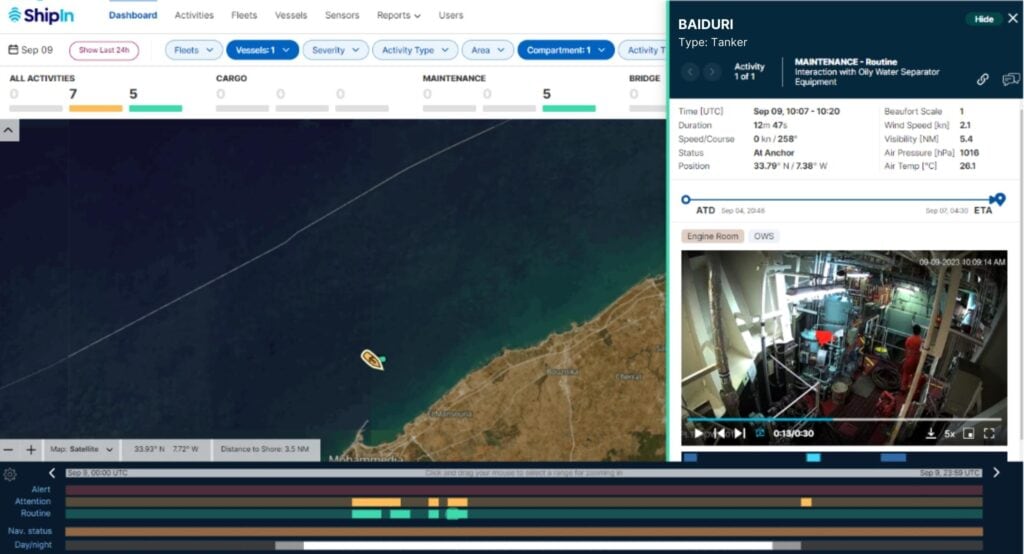Satellite-based Internet has existed since the mid-1990s, but it wasn’t until the U.S. approved Starlink, SpaceX’s high-speed, low-latency internet that it became more popular for use onboard ships. Big-name shipping companies like Columbia Shipmanagement (CSM), Costamare, and Enesel implemented Starlink for their fleets. And logistics leader Maersk plans to roll out Starlink on all 330 of their container vessels.
Starlink technology helps seafarers to feel more connected, with speeds of up to 200mbps, allowing them to stream movies, take video calls with loved ones, and more. This kind of smooth browsing experience is unheard of in the shipping industry. That’s because satellite communication traditionally did not provide enough bandwidth to transmit video, with speeds closer to 64 Kbps or 3 mbps.
But this investment will also power new technology on board, helping you create more seamless, efficient processes. With better connectivity, ship owners and managers shoreside can now better communicate and collaborate with teams onboard, using systems like ShipIn to reduce risks, improve operations, and drive efficiencies. Here’s what that looks like:
Stronger Satellite Connectivity Enables New Technology
On shore, more devices are powered by, or make use of, internet connections. Called the internet of things (IoT), this includes wearable technology like smartwatches, sensor-based lights, or at-home virtual assistants like Alexa or Echo.
At sea, stronger satellite connectivity enables new technologies that make your operations safer and more efficient. The global maritime IoT market is projected to reach $21.36 billion by 2027. This may mean:
- Safety features, such as enhanced security, radio frequency identification (RFID) systems, or smart locks
- “Smart shipping” technologies, such as adding sensors that monitor engine performance, fuel consumption, or weather conditions
- Environmental technology designed to meet new regulatory requirements, such as waste heat recovery systems, automated water recycling, and automated waste management
One powerful example of how stronger satellite connectivity enables technology is by upgrading your maritime closed-captioning television (CCTV) with ShipIn. Crews install a network of cameras, as they would with any CCTV system, in high-traffic areas, like the bridge, engineering room, and cargo hold.
But traditional CCTV has two major issues:
- The presence of CCTV doesn’t necessarily prevent an security or safety incident from taking place; and
- Thousands of hours of footage go unwatched, or require hiring additional staff or an outside firm to do so in order to understand patterns or issues.
With ShipIn, you don’t have to wait until after an incident has occurred to make use of your CCTV investment. Our proprietary AI technology scans through to identify events and activities of interest, such as real-time hazard and security detection, and patterns, such as time spent in port. In this way, our system can automatically surface the most important events in real-time, as they’re happening.
How AI-Powered CCTV Works with Satellite Internet
This real-time collaboration brings your shore and ship teams closer together for the first time.
Once an alert sounds, ship owners, Captains, and crew can take appropriate action steps to prevent further damage, initiate safety protocols, or receive updates as needed, facilitating operational efficiencies. In addition, teams can benchmark the ships in their fleet against one another, so you can understand which vessels are most efficient — and more importantly, what best practices they’re following that you can introduce to the rest of your fleet. You can effectively analyze day-to-day operations and understand what’s working well, what can be improved, and any issues, if they exist, can be dealt with before they become an incident.

All of this is facilitated through satellite internet. While Starlink’s impressive internet speeds make this a snap, ShipIn works on even the most basic of VSAT packages. We understand that not all vessels have the same communication systems, which is why we built the system to be flexible. That’s why our system does not exceed 20% of the bandwidth at any given time, so as not to interrupt routine business communication.
Stay Connected from Ship to Shore with ShipIn
ShipIn’s Visual Fleet Management technology maximizes opportunities for efficient ship-to-shore communication over available satellite links even when that coverage is spotty. In this way, ships can provide nearly continuous communication and visibility from ship to shore into shipboard activities, shipboard behavior, and shipboard status so that a shore-based manager can review, comprehend, and synthesize such information at-a-glance:

Gain the visibility and insights you need to run your fleet.


